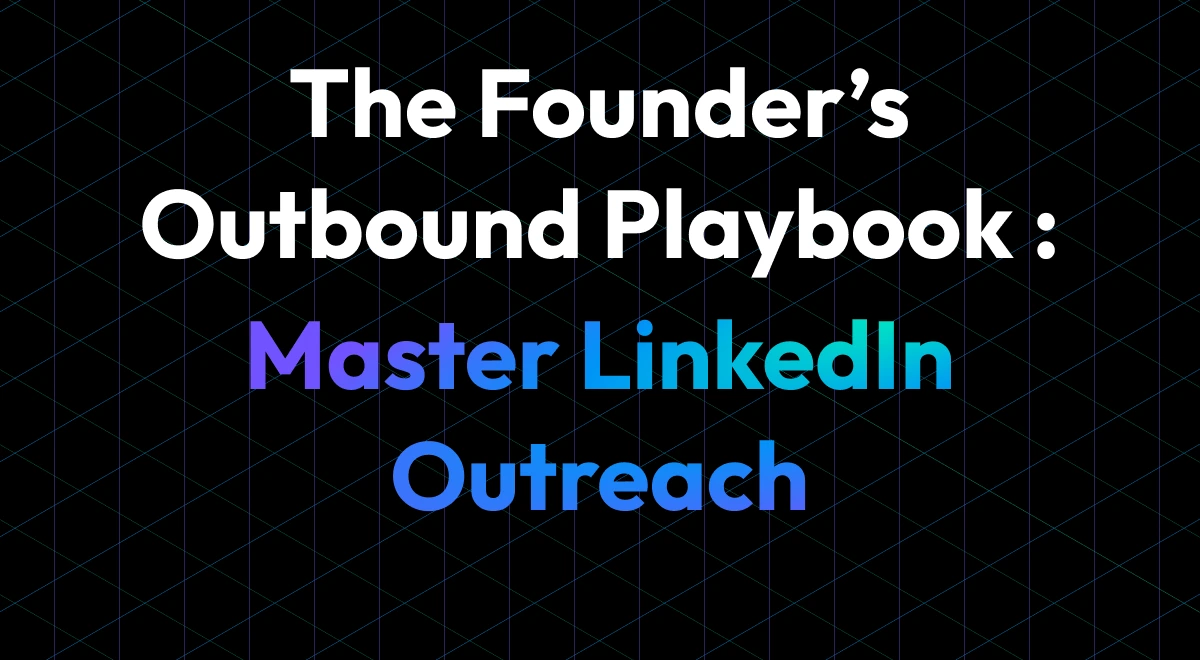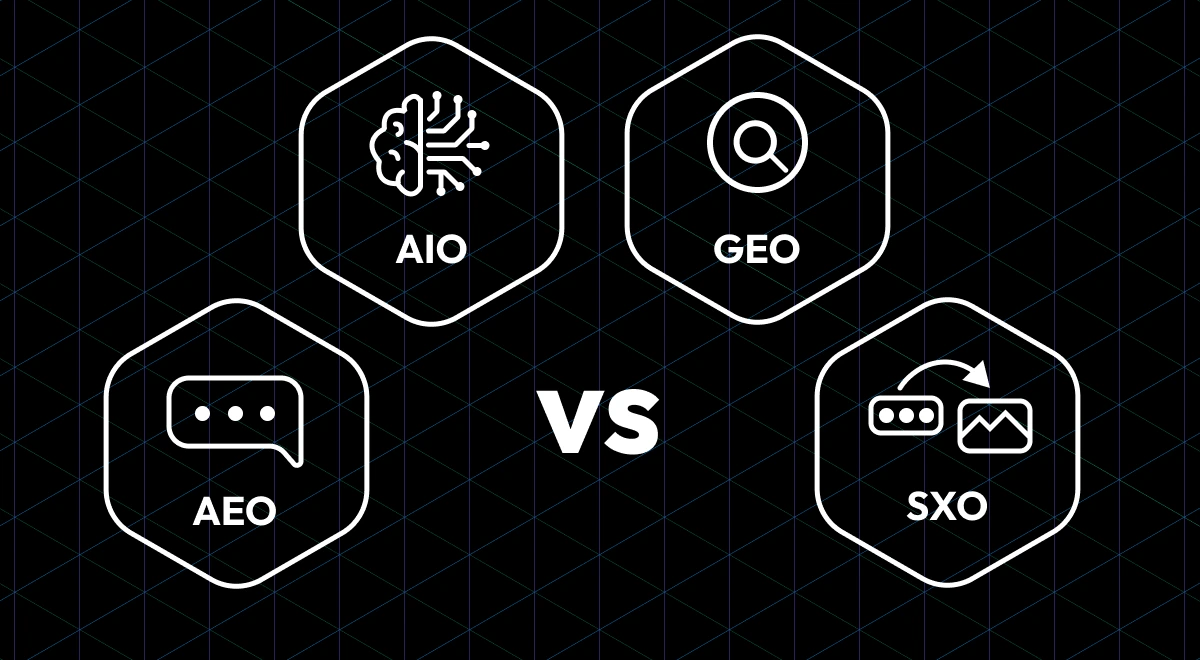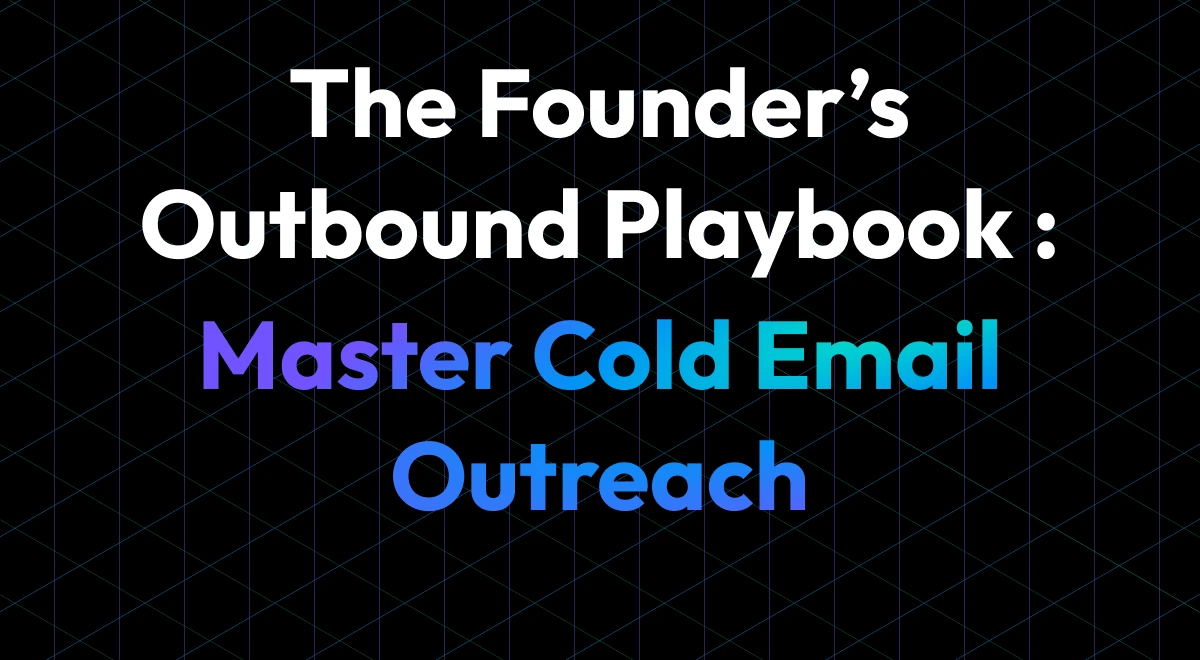TL;DR: This guide helps startup founders build an effective LinkedIn outbound system by refining their ICP, optimizing profiles, writing concise, relevant messages, and using LinkedIn strategically alongside cold email to build meaningful prospect pipelines and generate high-quality leads.
Why Should Startup Founders Prioritize Outbound?
When done right, outbound is one of the most effective ways for founders to guide early-stage growth, reach ideal buyers faster, and build a predictable pipeline. This playbook helps founders master outreach in a strategic, measurable, and scalable way.
Should You Use LinkedIn or Cold Email for Outbound?
Founders should use both channels strategically.
| Channel | Strengths |
|---|---|
| Cold Email | Scalable, low-cost, detailed messaging |
| Warmer, social proof, relationship-focused |
Pro Tips
- Don’t duplicate messages across channels
- Use LinkedIn to warm up before messaging (likes, comments, mutual content)
- Space out touchpoints to avoid fatigue
Building a Realistic LinkedIn Outreach Plan
Your strategy depends on account maturity:
1. For New or Inactive Profile
- Limit connection requests to 10 per day to avoid triggering LinkedIn restrictions and maintain a natural growth pace.
- Avoid lengthy connection notes; keep them short and relevant, as long messages often reduce acceptance rates.
- Optimize your profile before outreach:
- Use a professional banner image that reflects your personal brand or industry.
- Craft a clear, value-driven headline that highlights your expertise and what you offer.
- Write a compelling About section with proof of impact (metrics, achievements, testimonials) to build credibility.
2. Well-Maintained Profile
- You can safely send 20–30 connection requests per day with a well-established profile.
- Add brief, relevant notes (1–2 lines) that demonstrate genuine intent and personalization but avoid overt sales pitches.
- Focus on 2nd-degree connections who match your Ideal Customer Profile (ICP) based on job title, industry, and geography to improve acceptance rates and relevance.
3. Premium LinkedIn Account (Sales Navigator)
- With Sales Navigator, you can increase connection requests to 25–40 per day, as it provides better targeting and analytics.
- Use InMail to directly message decision-makers without needing a prior connection, improving outreach efficiency.
- Leverage advanced filters such as title, seniority, company size, and technology stack to precisely target prospects.
- Save leads to organized lists and monitor profile views to optimize timing and follow-up strategies.
- For consistent, high-quality outbound prospecting, a Premium or Sales Navigator subscription is highly recommended.
Additional Tips
- Always personalize your connection requests when possible to increase acceptance rates.
- Monitor LinkedIn’s usage limits and avoid aggressive outreach that could lead to temporary restrictions.
- Leverage advanced filters such as title, seniority, company size, and technology stack to precisely target prospects.Regularly update your profile and engage with content to maintain visibility and credibility.
Identifying Your Ideal Customer Profile (ICP)
Your ICP is the foundation of effective outbound. It defines the exact companies and decision-makers who benefit most from what you offer. When you know who you're selling to, everything becomes easier—targeting, messaging, conversions.
Why It Matters
Without a clear ICP, outbound is random. You waste time, burn budget, and chase unqualified leads. With a defined ICP, your outreach is sharper, replies go up, and your sales cycle shortens.
How to define
1. Build Your ICP Hypothesis
Start with who you think you can help. Then go prove it.
- Define the problem you solve (get specific)
- Identify who feels that pain most (role, industry, size)
- Example: “Compliance heads at mid-sized financial firms spending 40+ hrs on audits”
2. Start with Warm Outreach
Your network is your first customer list.
- Friends, ex-managers, mentors—ask for feedback, intros, or early access
- Post on LinkedIn: share what you're building and who it’s for
- Conversations > pitches
3. Engage Where Your ICP Hangs Out
Don’t wait for them—go where they already are.
- Join LinkedIn groups, Slack channels, or niche communities
- Answer real questions, be helpful, stay visible
- Spy on competitor reviews to extract recurring pains
4. Run Problem-First Cold Outreach
Talk pain. Not product.
- Personalize using real triggers (funding, hiring, posts)
- Lead with the problem you believe they’re facing
- CTA: “Worth a quick chat?” or “Is this a current bottleneck?”
5. Offer Early Access Incentives
Make it easy to say yes.
- Beta programs: free/discounted for feedback
- Short pilots: quick value with defined metrics
- First-customer perks: pricing, access, testimonials
6. Close the Loop. Learn Fast.
Every “yes” or “no” teaches you something.
- Ask why they were (or weren’t) interested
- Track objections, patterns, and surprise insights
- Refine your ICP and messaging based on real-world data
Final Thought
Finding your first customers is discovery—not sales.
Be curious, be direct, and focus on learning.
Once you unlock relevance, traction follows.
Build Personas That Convert
Don’t stop at company-level traits. Understand the decision-maker. What does their day look like? What pressures do they face? What objections do they raise? What outcome are they chasing?
Use that intel to sharpen your messaging and timing.
Keep It Dynamic
Your ICP isn’t static. Refine it as your product evolves, you move into new markets, or if performance dips. Closed-won deals will show you who’s truly a fit—and how to find more of them.
Outbound only works when you’re speaking to the right people.
Dial in your ICP, and everything else—copy, targeting, sequences—starts working harder for you.
LinkedIn Outreach Benchmarks
| Metric | Target |
|---|---|
| Connection Acceptance Rate | 30-50% |
| Reply Rate (to messages) | 10-20% |
| Meeting Book Rate | 5-10% |
| InMail Response Rate | 15-25% (when personalized) |
Note: These are general benchmarks. Actual numbers may vary based on industry, offer, and audience maturity.
Designing Messages That Resonate
Generic messages don’t get replies. High-performing outbound stands out by being relevant, value-driven, and easy to respond to. Here’s how founders can write messages that convert.
What Makes a Great Message?
| Trait | Why It Matters |
|---|---|
| Relevance | Tailor to their role, industry, or company. Speak their language. |
| Clear Value | Show outcomes, not features. Why should they care—now? |
| Concise | < 100 words. More clarity = more replies. |
| Curiosity-Driven | Tease a result or insight to prompt interest. Don’t give it all away. |
| Low-Friction CTA | “Open to a 15-min chat?” > “Let’s book a call next week for a deep dive…” |
Personalization at Scale
- Reference context: Recent funding, team growth, or shared connections.
- Template smartly: Start with a solid base, personalize 1–2 lines.
- Leverage AI: Use it to speed up—not automate—contextual relevance.
Subject Lines That Get Opens
Use formats that are short, specific, and curiosity-driven.
- “Solving [Pain Point] for [Their Role]”
- “Quick question about [Relevant Topic]?”
- “Following up on [Event/Trigger]”
Message Flow That Works
- Tailored Opener
- - Reference a role-specific insight or trigger event.
- Pain Point Mention
- - Call out a challenge they’re likely facing.
- Clear Value Proposition
- - Show how you solve it-with clarity and focus.
- Optional Proof Point
- - Quick stat or example for credibility.
- Low-Friction CTA
- - “Open to a quick call?” or “Worth exploring further?”
Make it short. Make it specific. Make it easy to say yes.
When You're Ready for Outbound
You’re primed if you have:
- A clear, validated ICP
- A strong, differentiated value proposition
- The time or team to commit consistently
Debunking Outbound Myths
- "It’s just mass outreach."
- - Wrong. Strategic outbound is tailored to specific accounts, not blasted to random inboxes.
- "More volume means more results."
- - Not quite. Success depends on timing, messaging, and fit—not how many emails you send.
- "It delivers instant revenue."
- - False. Outbound is a long game—built through testing, follow-ups, and refinement.
Real-World Example
A fintech client struggled with low engagement. After shifting to an account-based approach—with tailored emails and LinkedIn touchpoints—they landed a key enterprise lead that converted into a major client.Precision > volume. Strategy wins in outbound.
Conclusion
Outbound isn’t guesswork—it’s a growth engine. When founders master their ICP, messaging, tech stack, and metrics, they unlock a scalable path to pipeline and predictable revenue.
Want to turn cold emails into consistent meetings? Dive into our Cold Email Best Practices Playbook to level up your outreach game.



